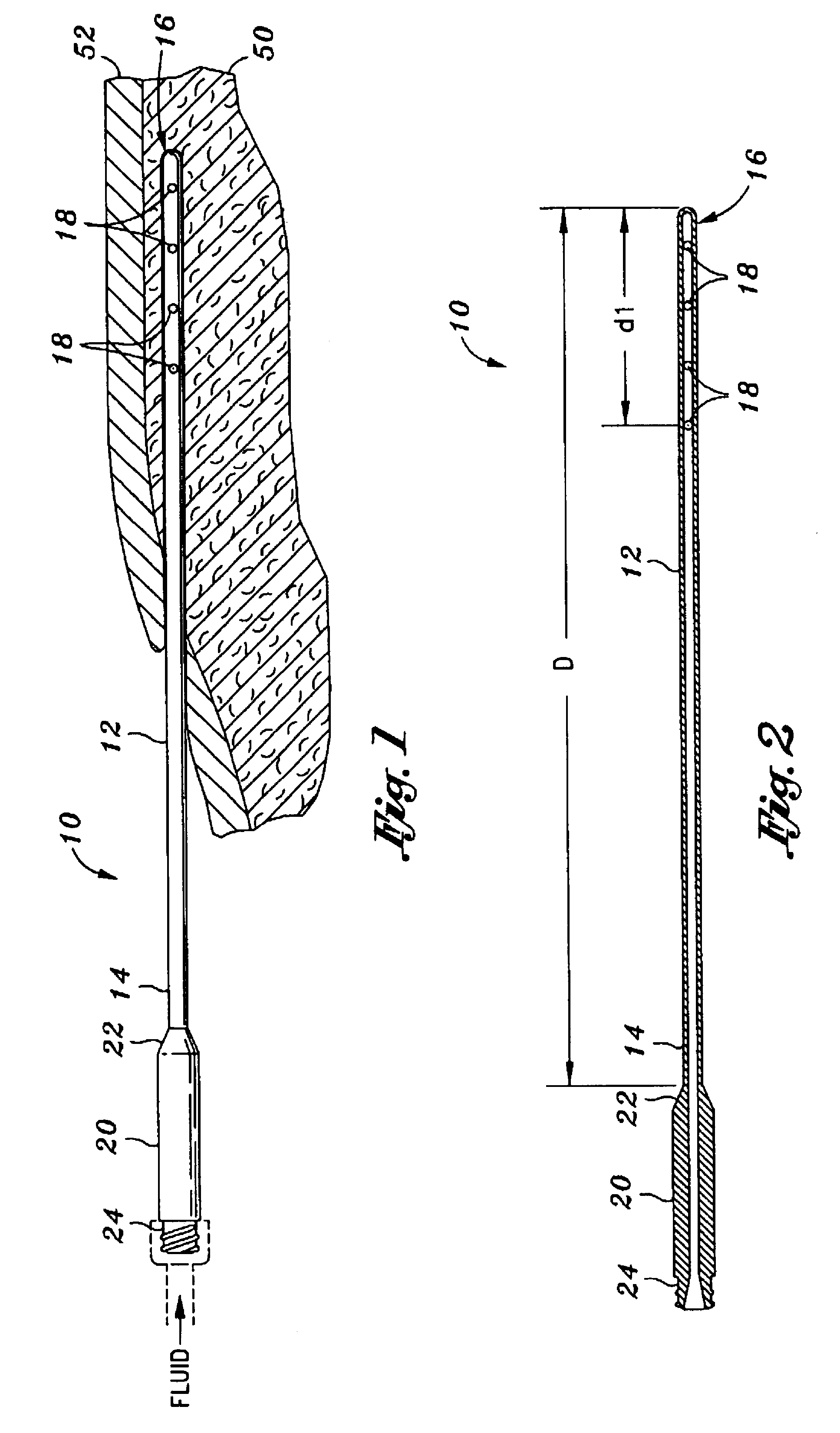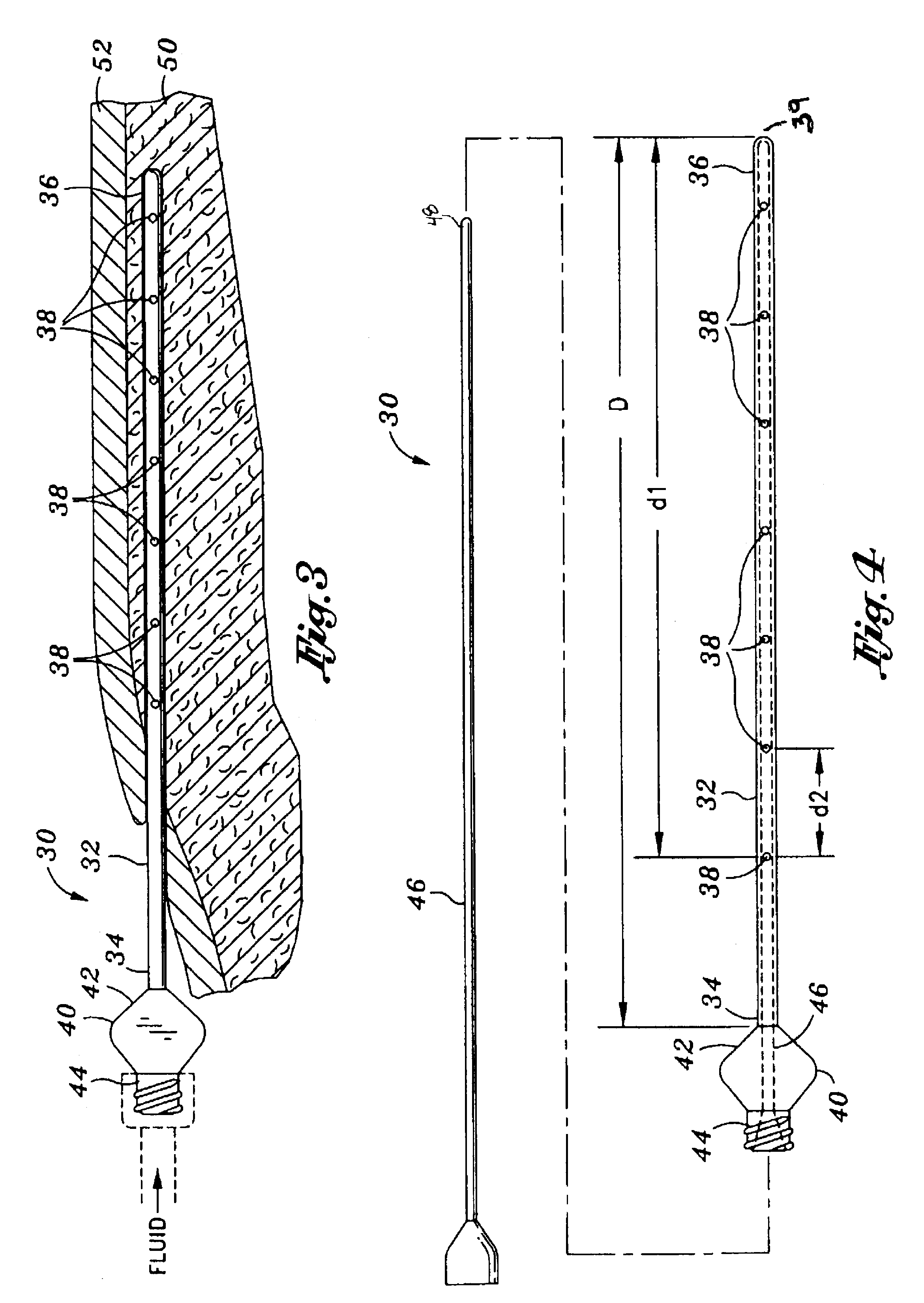Infiltration cannula
a cannula and infiltration technology, applied in the field of cannulas, can solve the problems of patient discomfort, on-q® devices cannot be inserted through a tiny hole in the skin into subcutaneous tissue, and achieve the effect of preventing the disruption of the method infiltration process
- Summary
- Abstract
- Description
- Claims
- Application Information
AI Technical Summary
Benefits of technology
Problems solved by technology
Method used
Image
Examples
Embodiment Construction
[0026]As described in further detail below, the present invention takes advantage of the tumescent technique in order to provide intermittent infiltration of local anesthetic. The present invention results in a significant decrease in patient discomfort due to the elimination of the piston-like in and out motion of the cannula. Once the cannula is in place, there is no need to push the cannula through the tissue in order to deliver the fluid to a wide area. Using the tumescent technique, the time needed in order to complete the infiltration of a targeted anatomic area is reduced to nearly half of the time required when using traditional prior art cannulas. The device and method described herein can use multiple (e.g., two) infiltration cannulas simultaneously. While one cannula is actively dispersing tumescent fluid into the subcutaneous tissue, the surgeon can reposition a second infiltration cannula. This allows the infiltration process to proceed without interruption, whereas pri...
PUM
 Login to View More
Login to View More Abstract
Description
Claims
Application Information
 Login to View More
Login to View More - R&D
- Intellectual Property
- Life Sciences
- Materials
- Tech Scout
- Unparalleled Data Quality
- Higher Quality Content
- 60% Fewer Hallucinations
Browse by: Latest US Patents, China's latest patents, Technical Efficacy Thesaurus, Application Domain, Technology Topic, Popular Technical Reports.
© 2025 PatSnap. All rights reserved.Legal|Privacy policy|Modern Slavery Act Transparency Statement|Sitemap|About US| Contact US: help@patsnap.com



